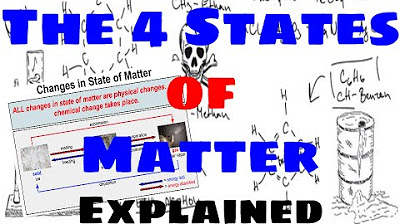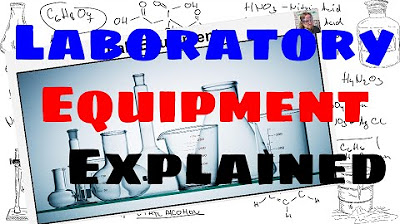APES Notes 2.6 - Adaptations
Summary
TLDRIn this educational video, Mr. Smeeds explores how organisms adapt to their environment through genetic diversity and variability. He explains the role of random mutations and crossing over in creating genetic diversity, which leads to beneficial adaptations that increase an organism's fitness. The video also covers natural selection, selective forces, and how environmental conditions determine the value of traits. Examples like the Galapagos finches illustrate how traits can become advantageous or disadvantageous based on environmental changes. Factors affecting the pace of evolution, such as rapid environmental changes and generation time, are also discussed.
Takeaways
- 🧬 Genetic diversity exists in all populations due to random mutations and crossing over during meiosis.
- 🐛 Adaptations are traits that arise from genetic variability and increase an organism's chances of survival and reproduction.
- 🌿 Natural selection favors organisms that are better adapted to their environment, leading to the propagation of advantageous traits.
- 🦉 Selective force or pressure is the environmental condition that drives the selection of traits that enhance survival and reproduction.
- 🐭 An example of adaptation is the change in mouse fur color in response to predation pressure from hawks, illustrating natural selection in action.
- 🏞️ The environment plays a crucial role in determining which traits are advantageous, as traits that are beneficial in one environment may be detrimental in another.
- 🌱 Rapid environmental changes can outpace a species' ability to adapt, potentially leading to migration or extinction.
- 🌡️ The pace of evolution is influenced by the rate of environmental change, genetic diversity within a population, and the generation time or lifespan of the species.
- 🐦 A real-world example of adaptation is the change in beak size of finches on Daphne Major island in response to drought conditions, affecting seed size and hardness.
- 📊 The practice task involves analyzing a dataset of finch beak sizes to describe differences and infer potential reasons based on environmental pressures and genetic factors.
Q & A
What is the main topic covered in the script?
-The main topic covered in the script is 'adaptations', specifically how organisms adapt to their environment.
What are the two reasons for genetic diversity in populations?
-The two reasons for genetic diversity in populations are random mutations during DNA replication and crossing over during meiosis.
What is meant by an 'adaptation' in the context of biology?
-An 'adaptation' is a trait that arises from genetic variability and is advantageous to the organism, increasing its likelihood to survive and reproduce.
How does natural selection play a role in selecting adaptations?
-Natural selection is the process by which organisms better adapted to their environment survive and reproduce more, passing on those beneficial traits to their offspring.
What is meant by 'selective force' or 'selective pressure'?
-Selective force or selective pressure refers to environmental conditions that favor the survival and reproduction of organisms with certain adaptations, and disadvantage or 'select out' those without them.
Can you provide an example of how a change in environment can lead to evolution?
-In the script, an example is given of mice with different fur colors. When a hawk preys on the tan-furred mice, the gray-furred mice, which blend into their environment better, have increased fitness and their trait becomes more prevalent in the population over time.
How does the environment an organism lives in influence adaptations?
-The environment determines which traits are considered adaptations. Traits that are advantageous in one environment might be detrimental in another.
What is 'microevolution' and how does it relate to the example of mice with different fur colors?
-Microevolution refers to small changes within a species over time. In the example, the population of mice evolves to mostly gray-furred individuals over time due to predation by hawks, which is an instance of microevolution.
How does the pace of environmental change affect the ability of a population to adapt?
-The pace of environmental change affects adaptation by determining how quickly a species can evolve. Rapid changes may lead to species migration or extinction, while gradual changes allow for adaptation.
Why is genetic diversity important for a population's ability to adapt?
-Genetic diversity is important because it increases the likelihood that some individuals in the population will have beneficial genetic mutations that give them new traits, which are advantageous in new environmental conditions.
How does the lifespan of a species affect its ability to adapt to environmental changes?
-Species with longer lifespans or generation times are less likely to adapt quickly to environmental changes because it takes longer for beneficial genetic mutations to spread throughout the population.
What is the skill that the audience is asked to practice at the end of the script?
-The skill that the audience is asked to practice is describing relationships among variables in a dataset, specifically analyzing the beak size of finches from different islands in the Galapagos.
Outlines

Cette section est réservée aux utilisateurs payants. Améliorez votre compte pour accéder à cette section.
Améliorer maintenantMindmap

Cette section est réservée aux utilisateurs payants. Améliorez votre compte pour accéder à cette section.
Améliorer maintenantKeywords

Cette section est réservée aux utilisateurs payants. Améliorez votre compte pour accéder à cette section.
Améliorer maintenantHighlights

Cette section est réservée aux utilisateurs payants. Améliorez votre compte pour accéder à cette section.
Améliorer maintenantTranscripts

Cette section est réservée aux utilisateurs payants. Améliorez votre compte pour accéder à cette section.
Améliorer maintenantVoir Plus de Vidéos Connexes

The Four States of Matter - Explained

Lab Equipment - Explained

3. Gr 11 Life Sciences - Population Ecology - Theory 3 Mark Recapture Method

4. Gr 11 Life Sciences - Population Ecology - Worksheet 1

PENJASKES KELAS X - SOFTBALL

Introduction to Culture [AP Human Geography Review Unit 3 Topic 1]

Menentukan Mr ( massa molekul relatif )
5.0 / 5 (0 votes)
